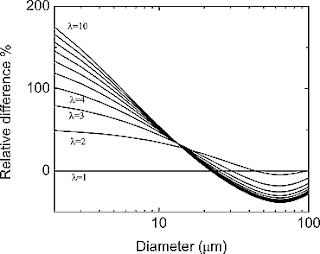Its time for aerosol scientists to gear up for the upcoming Glory Mission that has a fantastic passive sensor for monitoring aerosols from space with unmatched retrieval accuracies of 0.02 over ocean and 0.04 over land!
This article on the Glory Mission appeared in BAMS in the May 2007 edition, volume 88, number 5. It has a very detailed description of the science objectives, the instruments on Glory, measurement objectives, the data products from these instruments, associated uncertainties and validation plans.
Glory is basically a part of the A-Train constellation of satellites. It is scheduled to be launched in 2008 and will carry two independent instruments :
1) The Total Irradiance Monitor (TIM)
2) The Aerosol Polarimetry Sensor (APS)
The main purpose of the Glory mission is to help address the challenge of reducing uncertainty in adequately contraining climate sensitivity. Glory is intented to specifically meet the following four scientific objectives :
" • improve the quantification of the effect of solar variability on the Earth’s climate by continuing the uninterrupted 28-yr satellite measurement record of TSI;
• facilitate the quantification of the aerosol direct and indirect effects on climate by determining the global distribution of the optical thickness and microphysical properties of natural and anthropogenic aerosols and clouds with much-improved accuracy;
• provide better aerosol representations for use in various remote sensing retrievals, thereby allowing improvements in aerosol assessments by other operational satellite instruments; and
• provide an improved framework for the formulation of future comprehensive satellite missions for aerosol, cloud, and ocean color research. "
The APS will offer along track measurements for 3 years of mission life. It has the following unique measurement capabilities to ameliorate the ill-posed inverse problem and hence improve aerosol retrieval accuracies:
" • to measure not only the intensity, I, but also the other Stokes parameters describing the polarization state of the reflected radiation (i.e., Q, U, and V; Hansen and Travis 1974);
• to increase the number of spectral channels and the total spectral range covered;
• to increase the number and range of viewing directions from which a scene location is observed; and
• to improve the measurement accuracy, especially for polarization "
The aerosol and cloud products from APS will be delivered at ~6 km spatial resolution (nadir) and initial data will be made available within 6 months after launch ! Aerosol data products include columnar spectral aerosol optical thickness, aerosol effective radius, effective variance of the aerosol size distribution, aerosol spectral real refractive index and aerosol spectral single scattering albedo.
For more details please refer to the following :
Mishchenko, M.I., B. Cairns, G. Kopp, C.F. Schueler, B.A. Fafaul, J.E. Hansen, R.J. Hooker, T. Itchkawich, H.B. Maring, and L.D. Travis, 2007: Precise and accurate monitoring of terrestrial aerosols and total solar irradiance: Introducing the Glory mission. Bull. Amer. Meteorol. Soc., 88, 677-691, doi:
10.1175/BAMS-88-5-677.






 Annual fall meeting of American Geophysical Union (AGU) and annual meeting of American Meteorological Society (AMS) is approaching close in December 2007 and January 2008 respectively. These are two biggest events in USA where more than 20 thousands scientist from around the world get together
Annual fall meeting of American Geophysical Union (AGU) and annual meeting of American Meteorological Society (AMS) is approaching close in December 2007 and January 2008 respectively. These are two biggest events in USA where more than 20 thousands scientist from around the world get together 












 This graphic shows a flight comparison between CALIPSO data (middle) and data taken from the cloud physics lidar on the ER-2 (bottom) from the same time a location on August 12. The image at the top is infrared data from a GOES satellite illustrating the cloud cover that both the CALIPSO and the ER-2 lidars observe. The flight path of the ER-2 and the CALIPSO track can be seen at the right of the image as a solid line
This graphic shows a flight comparison between CALIPSO data (middle) and data taken from the cloud physics lidar on the ER-2 (bottom) from the same time a location on August 12. The image at the top is infrared data from a GOES satellite illustrating the cloud cover that both the CALIPSO and the ER-2 lidars observe. The flight path of the ER-2 and the CALIPSO track can be seen at the right of the image as a solid line









